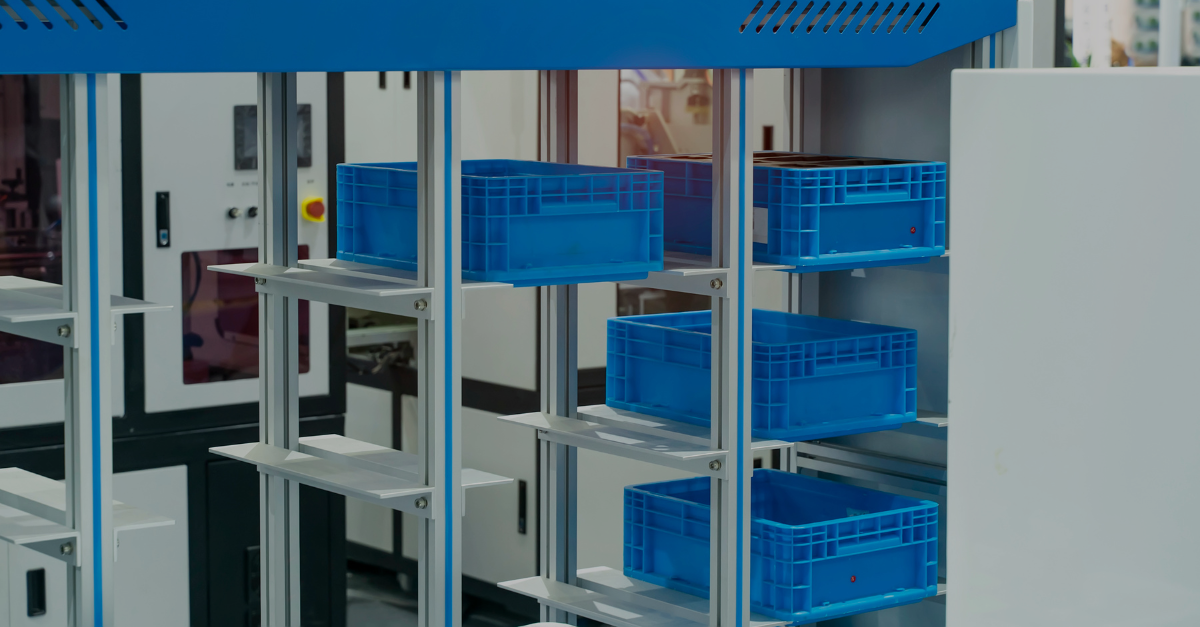
Over the past four decades, the landscape of fulfillment has witnessed a remarkable transformation. What was once dominated by brick-and-mortar stores has now exploded into the world of e-commerce and omnichannel fulfillment. To seamlessly adapt to these evolving order profiles which tend to be smaller and require more complex picking strategies, operations are increasingly relying on a blend of omnichannel or e-commerce warehouse management systems and automation. The elimination of manual processes has become crucial for the success of these operations.
But how exactly can automation, and specifically robotics, play a pivotal role in today’s warehouses?
For insight, we spoke with numerous supply chain experts who unanimously agreed that there is no one-size-fits-all solution in the realm of robotics for omnichannel warehousing.
One thing our experts did agree on is the many benefits of warehouse robotics and automation, including:
- Automated Order Picking
- Reducing Travel Time and Labor
- Sorting and Packaging
- Inventory Management
- Warehouse Optimization
- Scalability and Flexibility
- Data Analytics and Insights
But deciding on exactly what to implement can be tricky. According to Steve Hopper, Founder and Principal at Inviscid Consulting, “The variety of types of robotics used in warehousing and distribution is proliferating rapidly. So is the number of companies who develop and implement such solutions. But it’s important to remember that robotics is a tool, not a goal. Put simply, the goal of an omnichannel operation is to fulfill a variety of orders accurately, in the shortest amount of time, and for the lowest cost per unit shipped. And each of these factors – accuracy, time, and cost – can be defined and measured objectively.”
Hopper suggests identifying the problems you want to address as the first step in determining whether robotics are the answer. Once you’ve determined what the warehousing and distribution requirements of the warehouse are, you can then consider all viable solutions, ranging from manual to automated (including robotics). “By taking this approach, your team can objectively compare the business cases of various options and select the most effective solution, which is usually the one that best satisfies the defined requirements of the business, both quantitatively and qualitatively.”
Once you know what you are shopping for, pinpointing exactly what to purchase is another challenge. Just like selecting and implementing a WMS takes research and preparation, so does selecting the automation that will work best to achieve business goals. James Goldman, CEO, and Managing Partner at JGA agrees, “Selecting the best Autonomous Mobile Robot (AMR) for your omnichannel operation can be challenging, especially given the various types of AMRs available in the market.” Factors to weigh include functionality, capacity, integration, flexibility, cost and labor challenges.
The integration of robotics will have an impact on your overall supply chain technology stack, and that cannot be ignored. More than anything, it’s important to remember that it is possible to run an omnichannel warehouse without robotics, so don’t adopt robotics because it’s the trend, it should be done because it will provide value. As Amit Levy, Made4net’s EVP of sales and
strategy shares, “It’s essential to assess your specific business needs, budget, and goals before deciding on their implementation.” Many successful omnichannel warehouses continue to thrive without robotics by focusing on optimizing existing processes and leveraging technology to support efficient fulfillment operations.
Omnichannel fulfillment is here to stay, and while it presents ample opportunities for growth, it can also bring challenges and complexities. For more insight into omnichannel fulfillment, how to use it to your advantage, and to learn what the experts we interviewed had to say, download a copy of our most recent White Paper: Omnichannel Strategies for Seamless Shopping Experiences.


